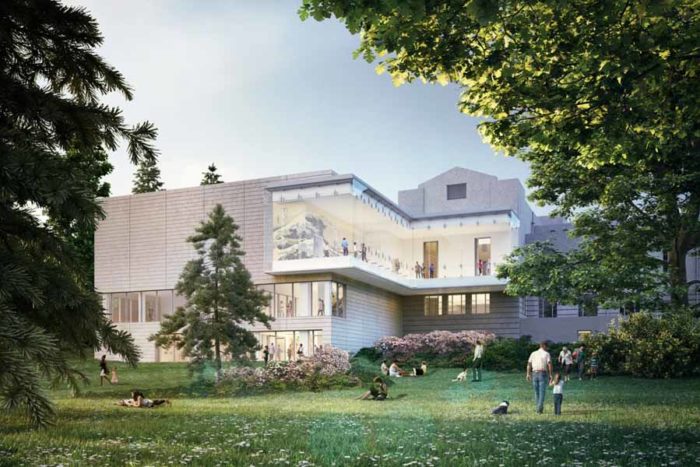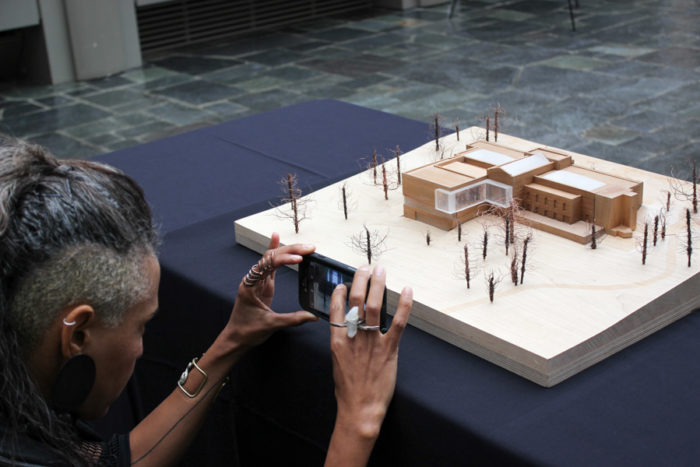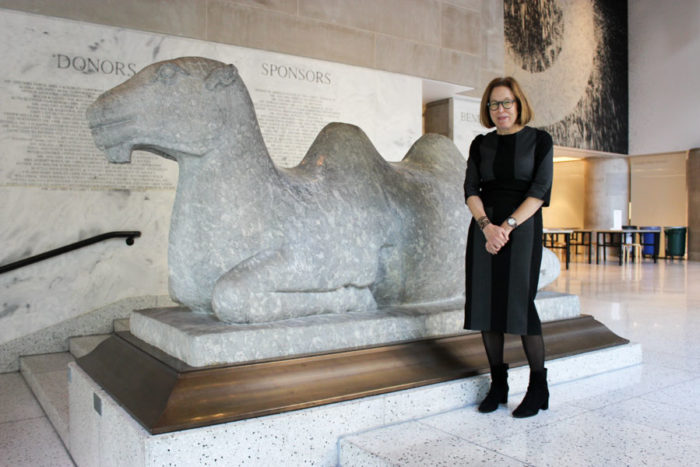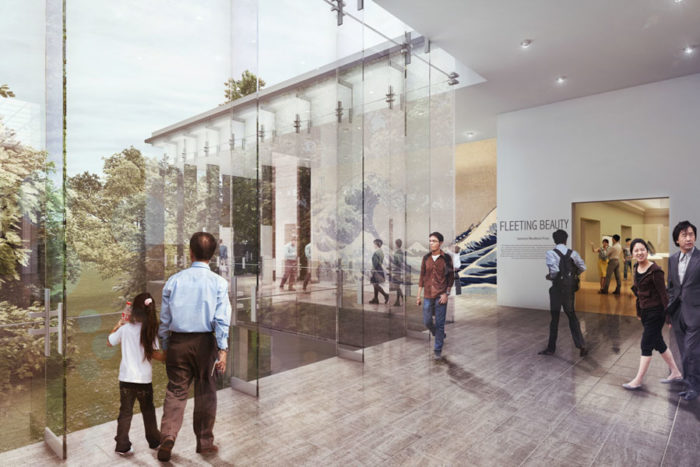
The collection that opened the Seattle Art Museum back in 1933 was mostly art from Asia brought over by a wealthy Seattleite Dr. Eugene Fuller.
So when the new downtown facility opened in the early nineties, the original art deco building in the middle of Volunteer Park was turned into the Seattle Asian Art Museum, coming full circle.
Now plans are in the works to close that building for two years for renovation and expansion starting next Spring. But the SAM director and art historians have no fear that Asian art will go away.
Representatives from SAM said that the latest revamping of the building — and the most expensive one to date — has several goals: preserving the historic art deco facade, protecting art collection, enhancing visitor comfort, increasing space for exhibition and programming and establishing “visual connection” between the museum and Volunteer park.
According to the latest design, there will be 3,500 square feet added to the building’s footprint in Volunteer Park, resulting in 13,000 square feet of new museum space. The project budget is approximately $49 million. This number could change when they finalized the design at the end of the year.
Even those who are long-time admirers of the museum building agree that this renovation and expansion are long overdue. Melanie Enderle, an art historian who teaches at the Seattle colleges and University of Washington, said that the museum was her and her husband’s first stop in the city when they moved from Philadelphia in 1989.
“We drove, looked at the map, came to the museum, had grilled cheese sandwich — we had a little Coleman stove because we were camping — and we made grilled cheese on the lawn right there,” said Enderle, gesturing at the lawn near the entrance of the museum. “The building is beautiful but it really is just too small to accommodate what they should be able to show off, I think.”

What’s wrong with the building now?
Since 1933, the Asian Art Museum building has had small renovations and expansions, but nothing significant. It went through the decades without climate control — a serious danger for some of the more historic pieces in the museum. When SAM did a capital campaign in the 2000’s to expand the downtown facility and build the Olympic Sculpture Park, the tiny gem in Volunteer Park was left behind. Then the economic downturn came in 2008 and it became difficult to maintain three sites.
When Kimerly Rorschach came as the new director in 2012, she had to look at the building and decide if it even made sense to stay there.
“I spent a lot of time thinking about it, looking at it, looking at its patterns of use, talking to people in the community and supporters and it seems, after all that, clear to me that yes this could be successful if we really make sure that the program is as vibrant as it could be,” said Rorschach.
So despite resistance from a handful of people — a petition against the renovation and expansion gathered 188 signatures as of September — Rorschach said that there is no other option. “We really have to take care of it because we’re just limping along there right now,” she said.
The lack of climate control has prevented the Asian Art Museum from borrowing sensitive, historical materials from other museums, which is partly the reason why the site often displays contemporary pieces that aren’t so fragile.
Another improvement to the museum will be visitors’ accessibility. Today, the building is technically ADA-compliant, but the design plan done by LMN Architects promises more comfort for visitors with physical disability.
Rorschach said she had little fear about this multi-million dollar project. After all, this is not her first rodeo. At the David and Alfred Smart Museum at the University of Chicago in the 1990s, she oversaw a gut renovation of the 1970s building. Years later, she built the Nasher Museum at Duke University from the ground up as a founding director.

Expanding the South Asian collection
The expansion will add one entirely new gallery space to be dedicated to art from South Asia, partly driven by the growing of South Asian population in Seattle and the Pacific Northwest, Rorschach explained during a community meeting about the renovation and expansion in September.
Roschach said the capital campaign to fund the renovation and expansion of the museum is going very well. At the same time, though, SAM is undergoing another fundraising campaign to hire a curator of South Asian art by the time the museum reopens in 2019. Rorschach said that she anticipates doing a national and even an international search for the right curator.
Currently, SAM has a small but fine collection of South Asian art, some of which is on display in the Asian Art Museum’s central area called the Garden Court. Some of those pieces were acquired by Dr. Fuller himself.
But historically the museum has adhered to a traditional view of Asian art, focusing on artifacts only from China, Korea, Japan, plus that small collection from India. In fact, Sherman Lee, the writer of the classic textbook A History of Far Eastern Art that helped to establish that narrow definition, was an associate director of SAM until 1952.
Sonal Khullar, an art history professor at UW whose research focuses on South Asian art, said that there’s been a trend at museums and universities across the country to acknowledge art from other parts of South Asia.
“It’s not like we’re going to see this transform over night, but the ways in which museum collections are organized and displayed then influences the teaching of art history and vice versa,” said Khullar.

Where will Seattle’s Asian art go?
Not far.
The downtown museum has always displayed some Asian collection, and Rorschach said this will continue during the renovation.
World-renowned contemporary artist Yayoi Kusama’s exhibition “Infinity Mirror” is coming to the downtown museum this upcoming summer.
The Gardner Center for Asian Art and Ideas, which offers public programs and events, has been running out of the Seattle Asian Art Museum for years. These programs are widely successful, and often draw more crowd than the building can handle. During the renovation, the programs will be held at Seattle University and other venues throughout the city.
“The historic heart of our museum is Asian art,” said Rorschach.
This post has been updated to clarify the additional square footage that will be added in the renovation.


It’s nice to see someone do actual reporting on a story, rather than just quoting a press release. But I see a large failure here: By being so dismissive of any opposition you present a puff piece completely biased toward everything the museum folks want or claim. No one is opposing the remodel. They are against expanding on park land. I’m guessing you didn’t talk to anyone involved with the petition. Did you suspect they might not have the resources that the museum has? SAM spent $2 million planning this before the public was even involved. Even a well-written story like this becomes meaningless if you learn of controversy but then choose to ignore it. Ms. Marsha, you probably know exactly what I’m talking about and you will feel a sense of doubt about your piece unless you find balance.